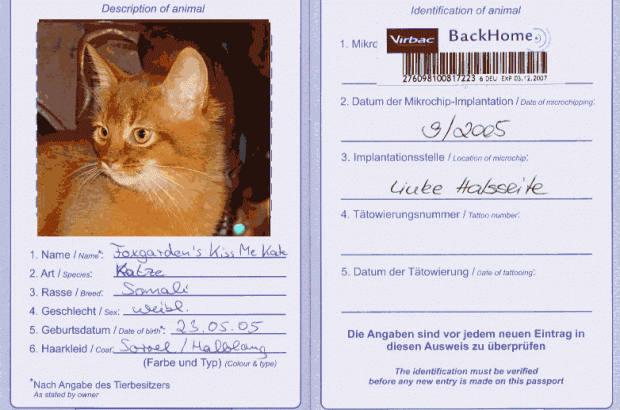- Daily & Weekly newsletters
- Buy & download The Bulletin
- Comment on our articles
Bringing your pet to Belgium
In many ways, bringing your pet to live with you in Belgium is not much more difficult than bringing along any other member of the family. It requires some paperwork, getting a passport, and running to and from the vet a few times, but if you’re in a typical pet owner – with only a dog or cat or two – you won’t be jumping through too many hoops.
The rules are different if you’re coming from an EU member state versus if you’re coming from outside the European Union, so pay close attention and make sure you have all the necessary documents according to your situation.
What follows is a rundown of the basic guidelines for bringing a pet to Belgium. Other useful resources you can read include Diplomatie.be’s detailed breakdown of the rules for pet owners coming from abroad and AngloInfo’s tips for how to find a veterinarian.
Dogs, cats and ferrets
First off, it should be noted that EU law defines a pet as a dog, cat or ferret, and has special legislation for travelling or moving with these three animals within the EU.
All pets in Belgium must be fitted with an identifying microchip implant or a tattoo (if give before July 2011) as well as a rabies vaccination. Also, dogs must be registered with the Belgian Association of Canine Identification and Registration of Canines (ABIEC/BVIRH). (The ABIEC/BVIRH is also who you should contact if your dog goes missing, or if you find a dog without an owner.)
If moving from a country within the EU, your animal will also need what is called the EU Pet Passport. The passport is a small (and kind of adorable) booklet (pictured) filled out by a veterinarian in you home country detailing your pet’s basic information, its microchip number, and vaccination history.
But take note: the UK, Ireland, Malta, Norway and Finland each impose the requirement that your animal be treated against the parasite Echinococcus multilocularis, so if your pet will pass through any of these countries en route to Belgium, be sure that you have this documentation in order as well.
If you are coming from a non-EU country, the EU Pet Passport is not necessary. You animal must still have a microchip or tattoo, proof of rabies vaccination, and a certificate of health from an official vet from your country of origin.
On top of these, if you are not from one of the countries that the EU recognises as “rabies-free” or as taking appropriate steps to control the incidence of rabies, then you will also need to provide a negative rabies blood test that has been carried out a laboratory accredited by the European Union at least 30 days after vaccination and at least three months before travelling.
Gerbils, hamsters and beyond
For pets beyond dogs, cats and ferrets (including birds, reptiles, fish, etc.), the EU leaves it up to Belgian law to decide the rules for entry. The Belgian Federal Department for Public Health publishes a list of animals allowed to be brought into Belgium without any special permission (in French). This list includes most of the typical pets, including hamsters, gerbils, a range of other, more obscure rodents, as well as many types of livestock.
For pets not on this list, you will have to apply directly to the Belgian government for permission to bring that pet to Belgium, a process that can take up to six months.
Photo courtesy Kumasasa.de


















